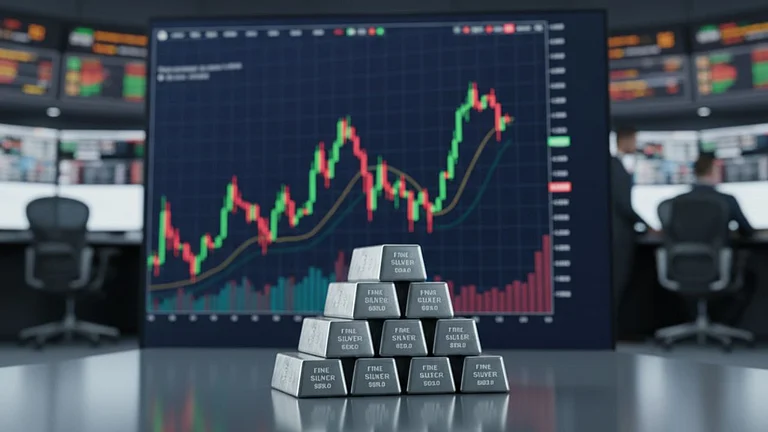Silver Price Crash: Know why prices of silver have declined significantly after hitting record highs on the Multi Commodity Exchange and the global market
Silver Loses Its Lustre: Prices Fall 13% From Record High - Know Why
Amid a halt in the gaining spree and a steep fall from the record highs, here’s a look at some of the key factors which are likely to have stolen silver’s shine after its stellar rally:
After a stellar run in 2025, silver witnessed a sharp fall from record highs in recent trade. The precious metal climbed to an all time high on the Multi Commodity Exchange (MCX) exactly one week ago. However, the precious metal has pared the gains and fallen over 13 per cent from its record high levels in just one week.
On October 17, Silver December Futures climbed to a record high price of Rs 1,70,415 per kilogram. On October 24, silver prices fell 13.65 per cent to close at Rs 1,47,150 per kilogram.
In the global market spot silver prices also witnessed a steep fall from their all-time high of $54.47 per troy ounce which the metal climbed to on October 17. On October 24, the precious metal closed at $48.6 per troy ounce in the international market marking a decline of nearly 11 per cent from the record highs.
Notably the rally in silver prices followed the interplay of demand and supply gaps amid geopolitical shifts and dramatic changes in investor sentiment. The rally in silver prices commenced in October as industrial demand for the metal increased while mining activity stagnated and recycling remained limited resulting in constrained supply.
In the domestic context the demand was further backed by festive buying of the precious metal for traditional and cultural reasons on festivals such as Diwali and Dhanteras. Uncertainty caused by strained trade relations between major economies such as the US, India and China also lifted the demand for the safe haven asset. Amid a halt in the gaining spree and a steep fall from the record highs, here’s a look at some of the key factors which stole silver’s shine after its stellar rally:
Profit-Booking
As silver prices climbed to record-highs on October 17, investor sentiment changed resulting in selloffs, as traders who purchased the metal at lower prices sought to book profits. The selloffs prompted a downward pressure on the price. Eventually leading to the supply of the metal in the global trading hub of London improving. A major part of the selling was attributed to US and China.
Thaw In Geopolitical Tensions
Investors have been attracted to silver’s appeal as a safe-haven asset. Silver prices tend to not get negatively affected by trade tensions and geopolitical conflicts. In 2025, trade tensions have routinely flared on account of a major protectionist shift in US trade policy which led to the imposition of tariffs on major US trading partners. Additionally geopolitical conflicts such as the ones which occurred between India and Pakistan, Israel and Iran and Russia and Ukraine also bolstered the demand for the safe haven asset. While trade tensions, uncertainty and geopolitical fissures remain, a recent thawing of tensions between Israel and Palestine and renewed optimism between U.S and its trading partners reaching a trade deal have lessened the demand for safe-haven assets.
A Stronger U.S. Dollar
In the international market, precious metals trade in US dollars. Amid a strengthening of the US Dollar silver became more expensive for buyers using those other currencies, thereby potentially reducing the demand for the precious metal pulling the price down.
Seasonal Demand Changes
Festive buying typically moderates after the end of the festive season post Diwali. Thus in the absence of the festive push, the domestic demand for silver moderated leading to a price drop.
Federal Reserve Policy Uncertainty
Silver and gold prices tend to react to US Federal Reserve’s policy changes. Speculation regarding a delay in expected interest rate cuts is also likely to have lowered the appeal of silver against assets such as bonds which pay interest, leading to a decline in demand and prices.

